If you're considering cloth diapering your baby, it's common to wonder how many cloth diapers you will need. I will give you the answer along with some helpful tips about cloth diapering.
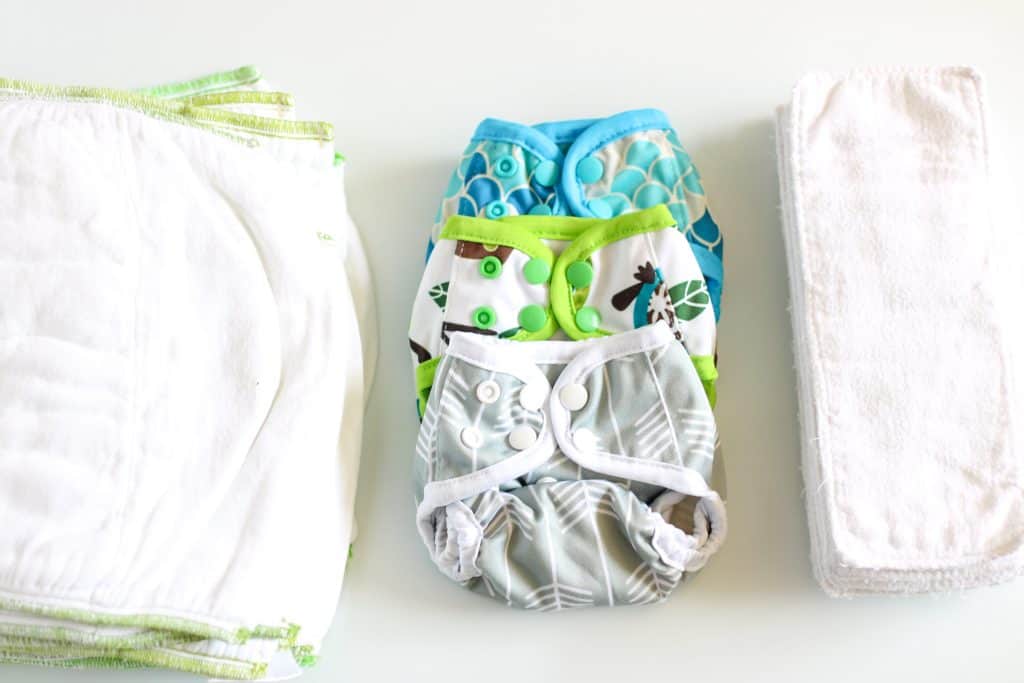
Before getting pregnant, I had a couple of friends who used cloth diapers and it really intrigued me, but it was also kind of intimidating. Washing away pee and poo in my washing machine?! Choosing from a million brands, styles and materials? And what if I decide, buy a bunch and they all don't fit?! It seemed like so much to figure out.
Then I became pregnant and needed to figure it out. As new parents, figuring out these types of things can seem so complicated!
After doing a little research, I learned the pros and cons of the different methods and materials and just went with what made sense to me. It really wasn't that hard, I just had to be willing to learn a little. You can learn it too and you'll be so glad you did!
I also did elimination communication (early potty training) along with cloth diapering, which I would HIGHLY recommend. As great as cloth diapers are, I don't want my babe to be in them for 3-4 years. I have a post with all the info about how to start elimination communication anytime before 18 months!
Jump to:

How many cloth diapers do you need?
The number of cloth diapers you need will depend on how often you plan to wash them and the system of diapering that you are going with. Diapers should be washed every 1-3 days, so I will make my recommendations below based on washing every 2 days. I have also factored in a few diapers for wearing while the rest of them are being washed.
For further information on different types of cloth diapers and answers to frequently asked questions, read on past this section.
Newborn Cloth Diapers

The average newborn goes through 10-12 diaper changes each day. Because the newborn phase passes so quickly, some parents elect to use disposables until baby can fit in a one-size diaper, instead of buying the diapering supplies that will only fit for a few months. If you are planning on having multiple babies, I see it as a worthwhile investment to buy newborn diapers, but it's totally up to you!
If you are choosing to use covers and prefolds (or another absorbent layer) you will need a minimum of 24 prefolds and 10 covers. My newborn stash actually only had 18 prefolds. Because I was doing elimination communication, some of the pee and poo was going in the toilet, rather than in her diapers. For that reason, I just used fewer diapers.
If using all-in-ones or pocket diapers, you will need 20-24 diapers.
Some babies can go straight into one-size cloth diapers, which are adjustable to fit a baby anywhere from about 6-35 lbs (supposedly). My baby was 6 lbs and one-size diapers were WAY too big.
After 3-4 Months of Age (Whenever Baby Grows Out of Newborn Size)

Older babies go down to using about 8-10 diapers per day.
For covers and prefolds, you'll need a minimum of 8 covers and 20 prefolds.
If using all-in-ones or pocket diapers, you will need 16-20 diapers.
You can choose between one-size diapers and sized diapers. I prefer one-sized because they're the only covers you'll need until your baby is out of diapers! As mentioned above, they are supposed to fit a baby from 6-35 lbs.
What else do I need to start cloth diapering?
- 35-40 cloth wipes (you're washing diapers, you may as well wash wipes too!) or disposable wipes
- Diaper pail (this diaper pail plus reusable pail liners is great for cloth diapering, but you could also use a trash can with lid) or large wet bag for storing wet and dirty diapers until washing
- Small wet bags to keep in the diaper bag for on the go cloth diapering (if that's what you choose, some use disposables while out)
- Peri bottle (I just used the one they gave me at the hospital after birth) or diaper sprayer. This is for removing solids by spraying them into the toilet before placing the diaper in the diaper pail. This is unnecessary for exclusively breastfed babies. Yes, their poop can go right in the wash!
- Laundry detergent that's suitable for cloth diapers. Refer to this article for info on laundry detergents and how to properly clean cloth diapers.

Types of cloth diapers
There are a few different styles of cloth diapers that each have their own pros and cons:
Cover and Prefold/Flat/Fitted Diaper
What it is: Two separate pieces- the waterproof outer layer (PUL, TPU or wool covers) and the absorbent inner layer (prefold, flat or fitted diaper). A flat is a large square piece of material that you can fold to fit in the diaper cover or wrap around baby's bottom, secure with Snappi or diaper pin, and then fasten the waterproof cover around it.
A prefold is a sewn rectangle of layers of cotton (most common, but there are other materials out there), usually with more layers in the middle section. You can fold it in 3 (known as a "pad fold") and place it in your diaper cover, then attach to baby, or secure it around baby first with a Snappi or diaper pin, placing the diaper cover on after.

Fitted diapers are made from the same absorbent materials as flats and prefolds, but are made like a disposable diaper with built-in fasteners (snaps or velcro), so no diaper pins required to secure them. Even though they look like a diaper, they aren't waterproof, so if you don't want leaks, use a diaper cover on top.
Pros: Covers (PUL and TPU) can be wiped out and reused between changes (as long as there has been no poop involved), so not as many are required. This is also the most customizable and budget-friendly option (flats and prefolds).
Cons: Not quite as low preparation as the other options. Fitted diapers can be quite expensive.
All-in-One
What it is: You guessed it, all the layers and components in one item! The water-resistant shell and absorbent layers in all-in-one diapers are all attached together. Some all-in-ones have sewn-in inserts and some come with semi-attached inserts that flip out for faster drying.
Pros: Considered the easiest option, since you use it as you would a disposable.
Cons: More expensive. Once the diaper is soiled, it cannot be reused until washed again, so you need more of them on hand. They also may take longer to dry since everything is attached.
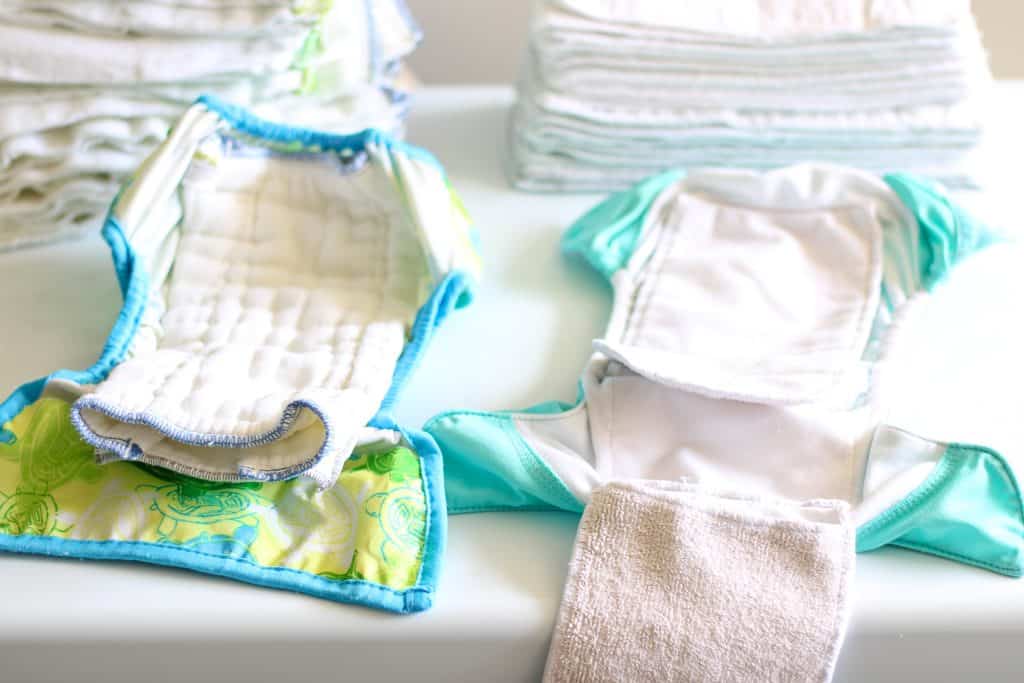
What it is: Two separate pieces- the waterproof outer shell (this time with a moisture-wicking lining inside) and the absorbent inner layer. The shell and lining of the cover are attached at all points except at both ends of the diaper, so this is where the absorbent insert (or prefold or flat) can be slid or "stuffed" in.
Pros: Cheaper than all-in-ones. Customizable absorbency using different layers.
Cons: More expensive than cover and prefolds. It takes time to "stuff" and "un-stuff" them. Moisture-wicking lining helps baby feel dry (you may see this as a pro, but coming from experience using elimination communication, I consider it a con).
Best cloth diapers to use
Now I'll tell you what I prefer to use and why!
I went with cloth diaper covers (My favorites for the first few months are Sigzagor newborn and Rumparooz newborn. After about 4 months, I used Sigzagor one size covers and Rumparooz one size covers.) and prefolds (Osocozy newborn prefolds for the newborn stage and Rearz organic prefolds after about 4 months).
I wanted the most economical option that wouldn't be a lot of work and that's why I went with prefolds instead of flat diapers. After trying different folds with prefolds and Snappis, I found that the pad fold was the easiest and just as effective as any other fold. I also made some inserts (you can buy inserts as well), to use along with the prefolds for extra absorption, especially at night time.

FAQ
It's a little bit more work, and believe me, you'll get some looks from people for not doing what everyone else does, but it is so, SO worth it.
Less chemical exposure to baby's sensitive skin. Disposable diapers are FILLED with nasty chemicals. Some of these include VOCs (volatile organic compounds- can cause eye, nose and throat irritation, headaches, nausea, dizziness, skin issues, even damage to the liver, kidney and nervous system!), SAP, phthalates, fragrances, adhesives, lotions and even pesticide residue! Many cloth diapers are made from organic materials, and then the only chemicals being put on your baby's skin are the ones in whatever laundry detergent you use. (Which is ideally a more natural, toxin-free one!)
Breathable. Cloth diapers allow better airflow than disposable diapers, so baby's skin is less likely to develop a rash.
Cheaper than disposables. You can use them over and over, instead of just once. Your utility bill will go up about $10-$15 per month because you will be doing more laundry, but you will still save tons compared to buying disposables.
Allows baby to feel wet. A con for some, but when baby feels the wetness, he will let you know and you'll change the diaper sooner. This is a big factor in preventing diaper rash. Also, it teaches baby cause and effect: "When I pee in my diaper, I feel wet." If you want to practice EC / early potty training (see my guide for how to start elimination communication), it is essential for baby to learn this!
Better for the environment. Most disposable diapers aren't biodegradable since they are made from plastic-based ingredients. It's estimated that it will take 500 years for one disposable diaper to decompose.
You can sell them when you're done (as long as they're in decent condition) and make some of your money back!
It really depends on the brand and how many absorption layers you use, but generally, all-in-ones are the most well-fitting and trim on baby.
The easiest way is to buy online. There are many brands and styles available. They can also be found at Walmart, Target, Toys"R"Us, and many locally owned small businesses geared towards mamas and babies. New diapers can be very expensive, so...
You can get them second-hand!! Don't be scared of used diapers. Peruse Facebook Marketplace, Craigslist and Kijiji for some killer deals on cloth diapers in great condition! You can also try to find a local cloth diapering group on Facebook, and often people will list their cloth diaper items for sale there. There's tons of information online about how to sanitize and strip diapers so they are good as new before you put them on your baby.
Snaps: Generally last longer than velcro. Takes a little longer to put on. Harder to do up at night when you're tired and it's dark. Slightly more difficult to get a good fit. Harder for toddlers to take off by themselves.
Hook & Loop (Velcro): Wears out more quickly than snaps. Quick to put on. Easy to do up at night when it's dark and you are tired. Easy to get a good fit. If you don't close tabs before washing, they can catch on other items in the wash and damage them. Easily collect hair and lint in the velcro (yuck!). Easy for toddlers to remove.
You can get very organized and use bins or drawers to sort and organize diapers, but I'll tell you the REALLY easy way that I store my clean cloth diaper stash (of the current size)...
I throw them all in a large pretty basket! Yup, no folding or sorting. It's just not enough of a priority for me to take the time to do that! They go in my basket right out of the dryer and whenever I'm changing a diaper I just grab a wipe or two, a prefold and cover (and sometimes an insert) out of the basket.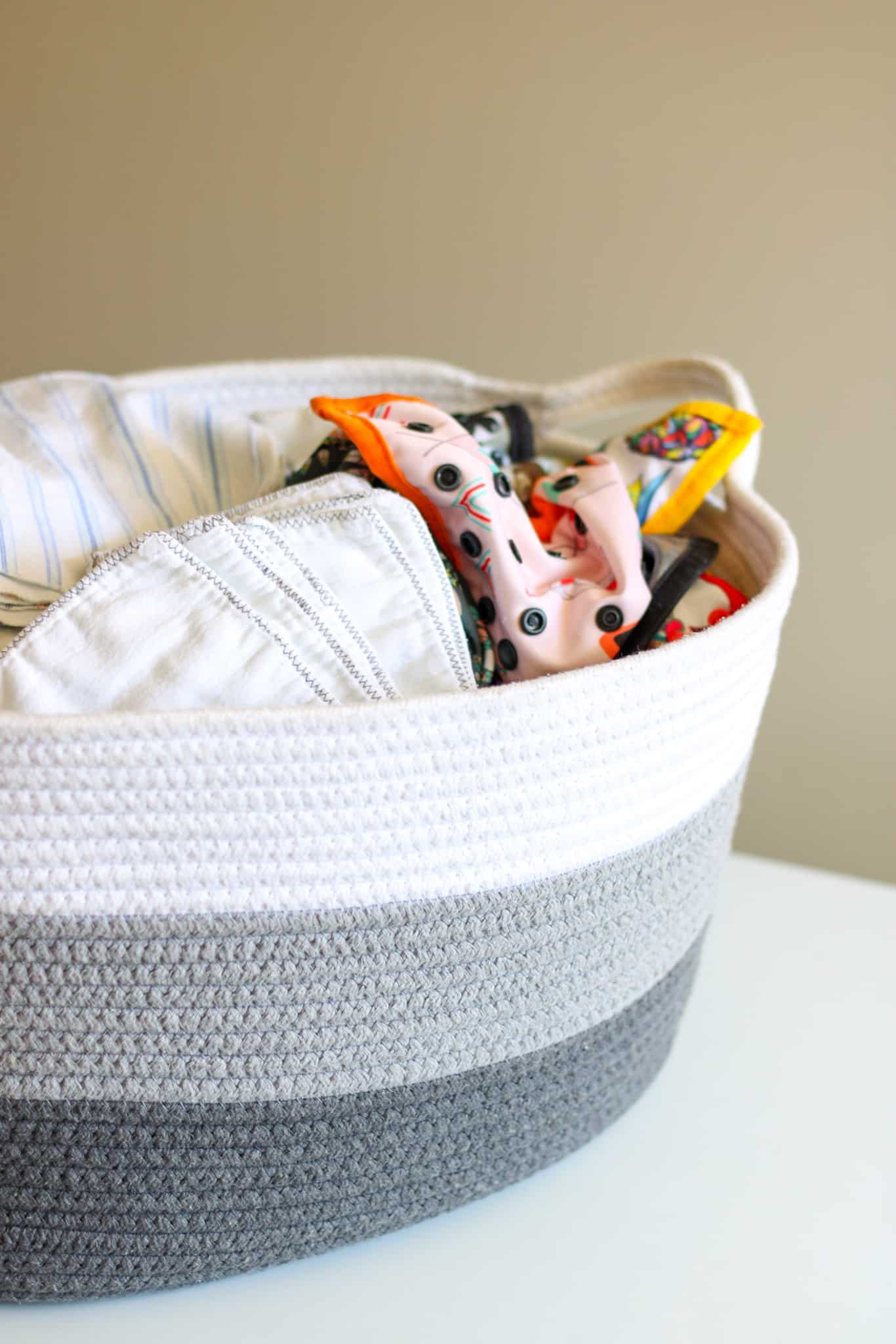
Diapers should be stored in a container that can be closed. Take the diaper off baby, rinse off any solids and throw it in your chosen receptacle. As before mentioned, you can use a diaper pail with 2 reusable liners. Every time you wash a load of diapers, you throw the pail liner in with it to be washed and put the clean one in the pail. A cheaper option is to use a garbage can with a lid and the same reusable liners. The cheapest option is a large wet bag you can hang on the back of a door.
It used to be advised to soak them in a solution until wash day, but that is no longer recommended.
Cloth diapering for one year won't save you that much, compared to using disposables. But if you continue to use them into year 2 and with a second child and more, that's where you really start to see savings. This is because most of the cost of cloth diapering is upfront. Once you have the supplies, you are only paying for laundry detergent, water and electricity for the washing/drying of the diapers (approximately $10-$15 per month!).
It depends on the daycare, you just have to ask! Some will be more willing if the process is similar to using disposables (the closest would be an all-in-one with hook & loop closure). Don't be afraid to inquire about it, as I know there are many that do cloth diapering.
Most diaper rash creams contain zinc oxide, which is an ingredient that creates a water-resistant barrier on the skin. It's great for diaper rash but bad for cloth diapers. It has the same effect on the diaper and therefore the diaper may stop absorbing pee (definitely don't want that in a diaper)! I've used this diaper rash cream recipe but omitted the zinc oxide, and still had great results with healing the diaper rash.
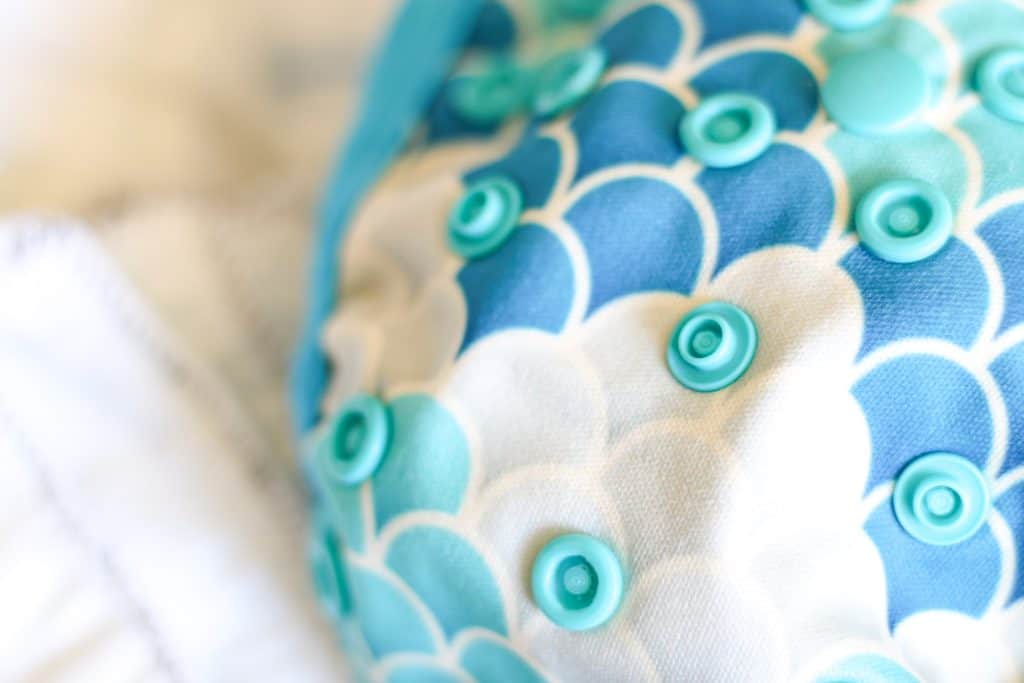
Don't be afraid, just get started!
I used disposables for the first couple of weeks with my baby because I was just afraid of the unknown. I knew disposables, and I didn't really know cloth diapers. But once I took the plunge, I wished I had started sooner.
Whatever your personal preference is for type of cloth diaper, get them and start using them!
Please comment below if you have cloth diaper tips or questions! I would be more than happy to help you along your cloth diapering journey.
Shop this post
- Newborn diaper cover
- Newborn prefolds
- One-size diaper cover
- Various sized prefolds
- Diaper pail and reusable liners
- Large hanging wet bag
- Smaller wet bags
- Snappi diaper fastener



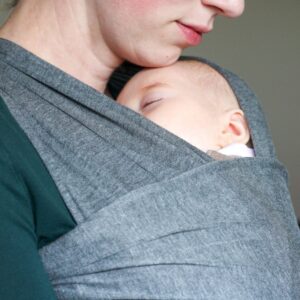


Allie
Such a great post. A few of my friends are due or have babies so I will definitely forward this.
thehomeintent
Oh thanks Allie, I hope it will be helpful for them!
Ada
I like how you thought of all questions we may have. Great information and tips!
thehomeintent
Thanks so much, Ada!
Elizabeth
Cloth diapering has always scared me but your post makes it seem so much more doable!